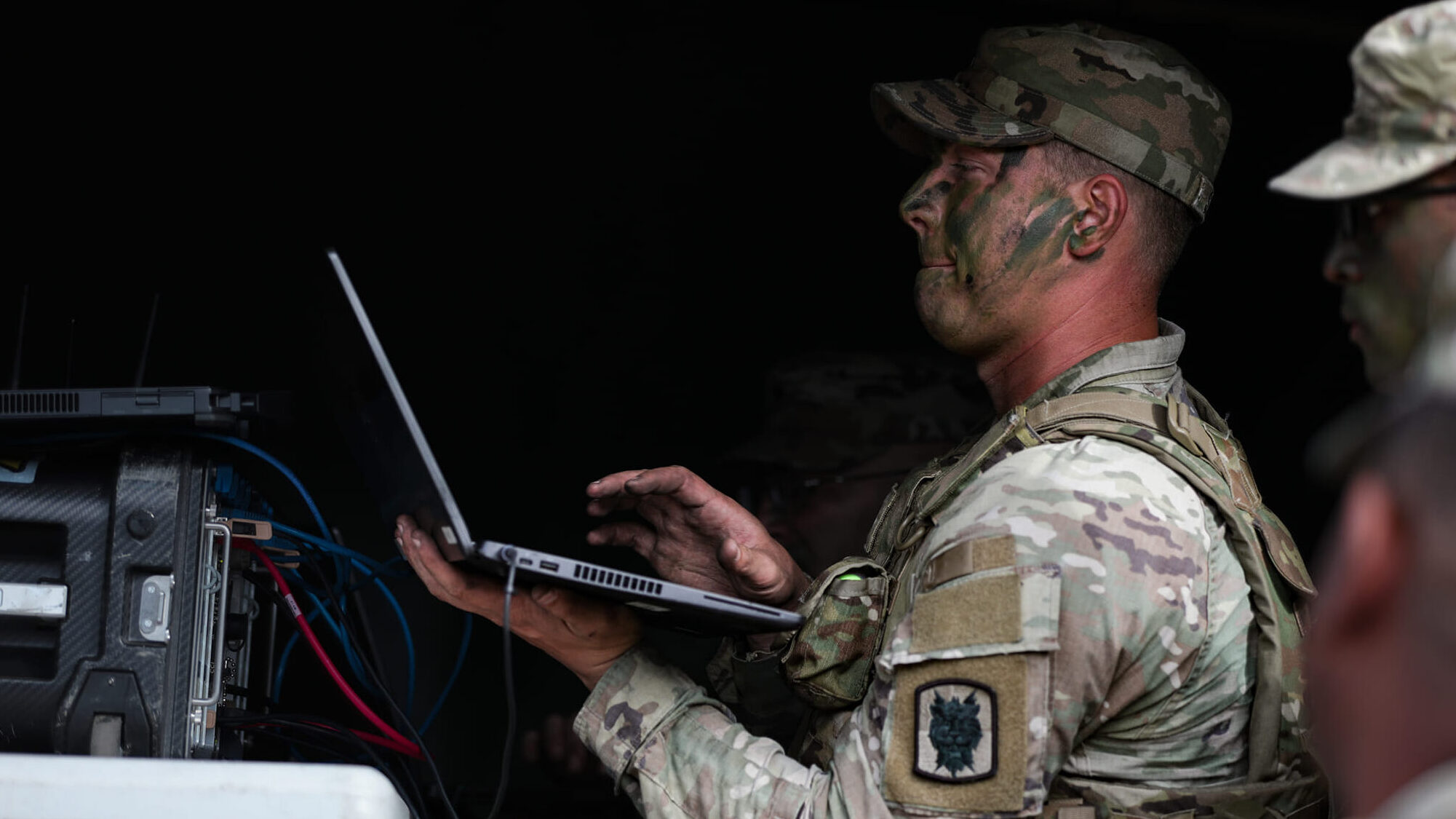
The ultimate goal of the Army’s Unified Network is to give soldiers the same network capabilities while deployed as they have at posts, camps, and stations. (Photo courtesy of the US Army.)
AUSA 2023 — As the Army works to simplify and modernize its network, service leaders are looking at ways to revamp acquisition strategies and send demand signals more creatively, and they’re asking industry for help.
“I think we acknowledge that at scale, we do have quite a significant amount of policy gaps … and I think, more than just the Army but across the department, we’ve moved really, really fast in a lot of technology areas, and we’re still kind of trying to pull the policies forward with us,” Army Chief Information Officer Leonel Garciga told reporters Oct. 11.
“So the way I look at this right now is we’ve been working really hard to triage where those gaps are, and definitely with industry I will be very transparent with my approach to this on policy reform inside the army,” he added.
That reform will look like developing more “creative buying relationships,” for example, when it comes to the Army’s network portfolio, Army Under Secretary Gabe Camarillo told reporters the same day. He added that resilience in the industrial base is the “most important” thing the service is looking for as it learns from Ukraine.
“What we’ve learned this last year, obviously with the surge of munitions in Ukraine, the delivery and drawdown of so many diverse pieces of equipment to the Ukrainians, has shown that our ability to reconstitute and to rebuild and to invest in more manufacturing capacity is absolutely critical to the United States Army,” he said.
The Army recently decided to nix its “capability set” concept — packages of upgraded hardware and software fielded every two years — in favor of fielding communications gear more frequently.
“On the network piece of equipment, we tried capability sets for several years where we would pool procurements together, deploy and field a set of equipment that was based on what was good over that two-year timeframe,” Camarillo said. “We’re obviously looking to make sure that we’re getting the best equipment possible.”
The capability set effort is housed under the Program Executive Office for Command, Control, Communications-Tactical (PEO C3T), also responsible for the service’s command post integrated infrastructure (CPI2) program.
Mark Kitz, leader of PEO C3T, told Breaking Defense in an Oct. 9 interview that over the next year, the Army will “challenge” industry on how to prototype a more mobile command post for the CPI2 program, an effort the service has been working on for years.
“But what we’re really going to do is re-imagine a command post, because the command post has to be mobile, it has to be survivable,” he said. “It has to disperse, there are things that we have got to accommodate in our command posts.”
Kitz added that at an upcoming industry day slated for this December, he wants to hear from industry on what capability areas they can deliver in right now and scale in the future.
“I think the most important thing that I’m communicating to industry is that we need a flexible network in the future,” Kitz said. “And we need to be able to iterate our programs so we can have that flexible network in the future.”























